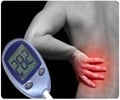Research says that the formula for peak exercise heart rate that doctors have used for decades in tests to diagnose heart conditions may be flawed.

After analyzing more than 25,000 stress tests, the researchers found significant differences between men and women and developed an updated formula to reflect those nuances.
"The standard that's currently in use is somewhat outdated," said Thomas Allison, M.D., cardiologist and director of stress testing at Mayo Clinic, and senior author of the study. "We want to make sure that when people do the stress test, they have an accurate expectation of what a normal peak heart rate is. Every so often, you need to recalibrate what's considered normal."
The new formula can help people better optimize their workouts and also improve the accuracy of test results. Stress tests, which are commonly used to help diagnose conditions such as coronary heart disease, heart valve disease and heart failure, require patients to exercise near their top capacity while technicians monitor the patient's cardiac performance.
The researchers drew data from 25,000 patients who took stress tests at Mayo Clinic between 1993 and 2006. The sample included men and women 40 to 89 years of age who had no history of cardiovascular disease.
The study reveals that although everybody's peak heart rate declines with age, the decline is more gradual in women. As a result, the previous formula overestimates the peak heart rate younger women can achieve and underestimates the peak heart rate of older women.
Advertisement
The study also showed that younger men have a lower resting heart rate and higher peak heart rate than women and that men's heart rates rise more dramatically during exercise and return to normal more quickly after stopping. The study did not investigate the physiological reasons behind the differences, although the researchers suggest hormones, especially testosterone, may play a role.
Advertisement
"It's logical that an equation developed 40 years ago based on a group that was predominantly men might not be accurate when applied to women today," Allison said. "But sometimes things just get stuck."
Changes since the 1970s in terms of average body weight, fitness levels and attitudes toward exercise – particularly among women – justify a re-evaluation of peak heart rate norms, Allison said. Other recent studies have offered updates to the formula, but this study uses a larger sample size and is the first to include data from both men and women.
Source-Eurekalert















